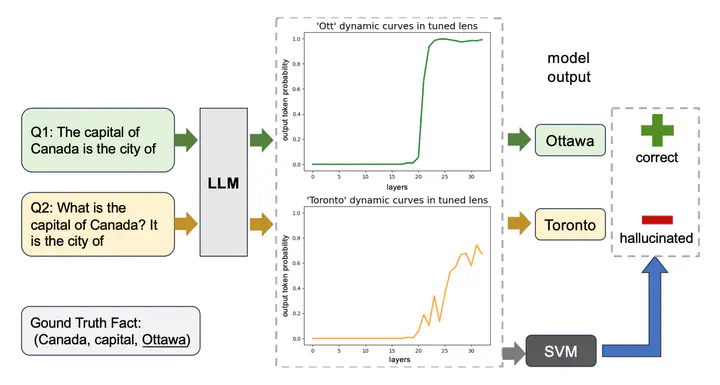 Image credit: Original Paper
Image credit: Original PaperAbstract
Large language models are successful in answering factoid questions but are also prone to hallucination. We investigate the phenomenon of LLMs possessing correct answer knowledge yet still hallucinating from the perspective of inference dynamics, an area not previously covered in studies on hallucinations. We are able to conduct this analysis via two key ideas. First, we identify the factual questions that query the same triplet knowledge but result in different answers. The difference between the model behaviors on the correct and incorrect outputs hence suggests the patterns when hallucinations happen. Second, to measure the pattern, we utilize mappings from the residual streams to vocabulary space. We reveal the different dynamics of the output token probabilities along the depths of layers between the correct and hallucinated cases. In hallucinated cases, the output token’s information rarely demonstrates abrupt increases and consistent superiority in the later stages of the model. Leveraging the dynamic curve as a feature, we build a classifier capable of accurately detecting hallucinatory predictions with an 88% success rate. Our study shed light on understanding the reasons for LLMs’ hallucinations on their known facts, and more importantly, on accurately predicting when they are hallucinating.